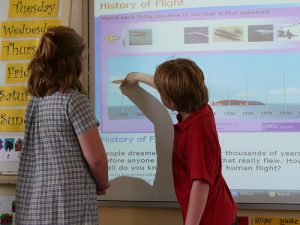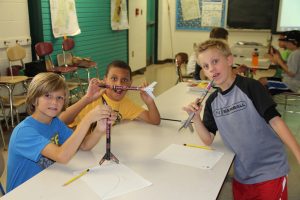Wise research aims to bridge the gap between the research that shows the efficacy of inquiry learning in science and the method in which science is generally delivered. In science specifically it has been found that students have many misunderstandings developed either through experiences, concepts or examples (Linn, M., Clark, D. & Slotta, J., 2003). In order to address these, WISE curriculum projects promote knowledge integration through providing inquiry projects which are flexible, customizable and adaptive. They also believe in sustainability. Through field testing and multiple cycles of trial, adaptation and refinement the inquiry projects are continually honed to meet the specific needs of the students. In this way WISE is a bottom up approach rather than a top down approach and is meeting the educational goal of delivering curriculum in a differentiated way, which is one of the goals of education.

In addition, WISE supports the provision of an instructional pattern to assist students through the inquiry. These include eliciting student ideas, adding ideas to these and supporting the process learning to improve understanding. In this way WISE is able to scaffold the students’ learning in an indirect way, while still providing them with many pathways to reach their conclusions. WISE guides the students through the inquiry project without being prescriptive, which leads to deeper learning.
In addition, WISE project teams are made up of diverse partners so as to provide a more holistic inquiry. These include pedagogical specialists, scientists, teachers, and technology designers. WISE framework design principles include making thinking visible, making science accessible, helping students learn from each other, and promoting lifelong learning, all goals of 21st century education as well as sound pedagogy.
Further to this, many WISE inquiry projects have been designed with detailed steps for the first inquiry investigation and then providing less detailed steps in subsequent projects. In this way students are able to move from supported learning to more independent pathways. This method is debated. When considering the Jasper Series, the belief that students can develop basic skills in the context of meaningful problem posing and problem-solving activities rather than isolated “targets” of instruction seems to refute this. That being said, the Jasper Series coincides with WISE with its emphasis on complex, problem solving, communication and reasoning and in connecting mathematics to the world outside the classroom. (Cognition and Technology and Technology Group at Vanderbilt, 1992).
Looking at this more closely in WISE design it has been found that students prefer to not have a lot of detail before they begin their inquiry, but rather work well with an initial page that provides an entry into the disciplinary knowledge and provides hyperlinks for students who wish more detail. In this way, making science accessible may not mean making it simple (Linn et al., 2003). This mirrors the anchored instruction shown in the Jasper Series as well.
Another link between the Jasper Series and WISE seems to be the belief that the educator should be a facilitator rather than the disseminator of information. In WISE an inquiry map helps students work independently on their project with prompts that help guide through process. Teachers can also easily customize the projects to match their curriculum and students.
The flexible, continually changing approach to WISE is based on the need for scientific materials that enable local adaptation along with support from multiple cycles of trial and refinement. Students’ needs and what scientific inquiries which engage them are also closely considered. Providing students with content they are interested in and that may have an impact on them is part of the real-world problem solving that is encapsulated in anchored instruction. This continual refinement is also found in the Jasper Series. Technology can provide for this, whereas traditional textbooks cannot. Furthermore new technologies can be integrated into WISE and the system itself scaffolds the use of offline activities by providing a project context, a pedagogical framework, and proven curriculum design patterns.

Customizing WISE would be beneficial. If I were to use any of the inquiries I could integrate the climate and realities in Northwestern Ontario or the Canadian Shield. In addition I could integrate information about Lake Superior, one of the largest freshwater lakes in the world, which is situated in Thunder Bay (the students’ hometown). Local flora and fauna could be considered. The seasons and the weather locally could also be integrated. These are just some examples.
Linn, M., Clark, D., & Slotta, J. (2003). Wise design for knowledge integration. Science Education, 87 (4), 517-538.
Cognition and Technology Group at Vanderbilt (1992). The jasper experiment: An exploration of issues in learning instructional design. Educational Technology Research and Development, 40 (1), 65-80.